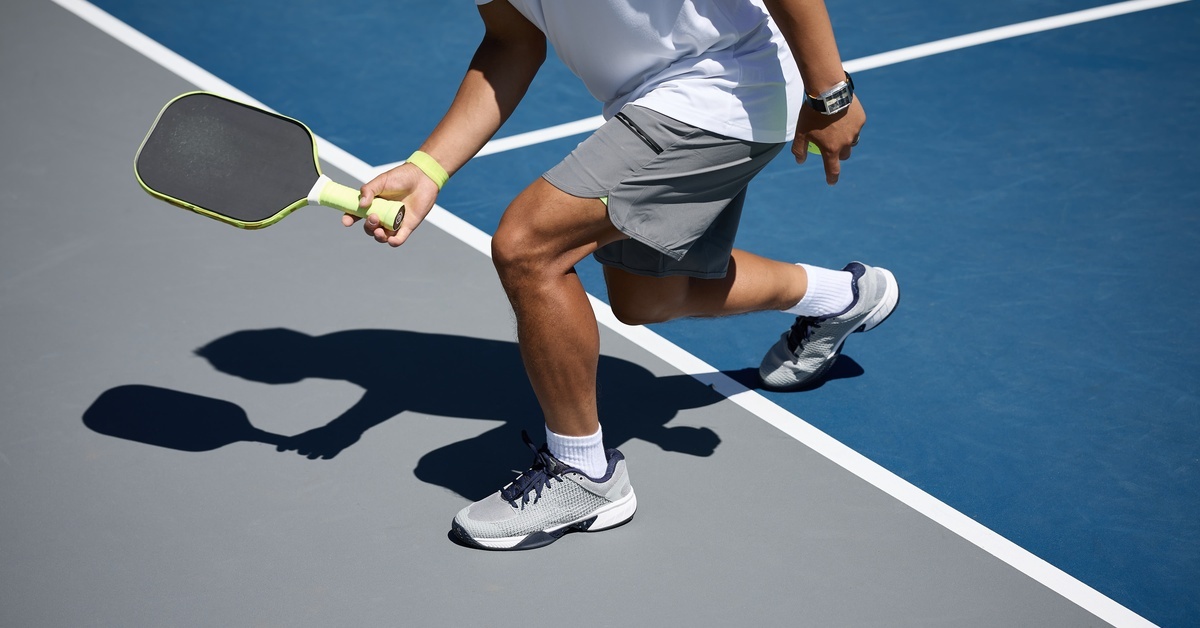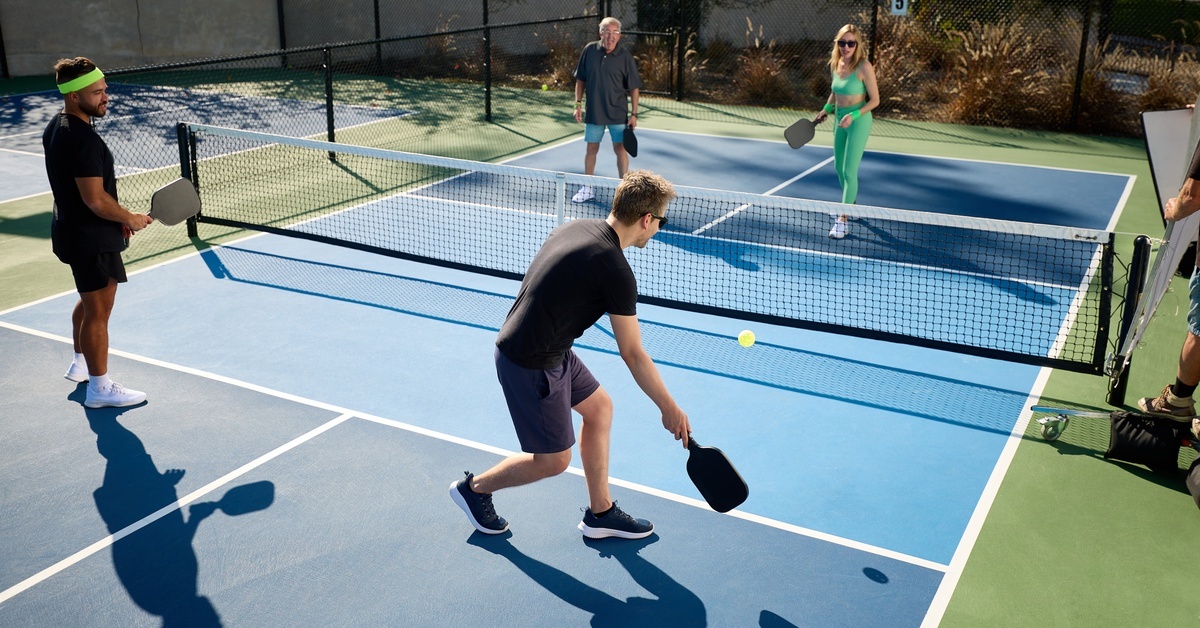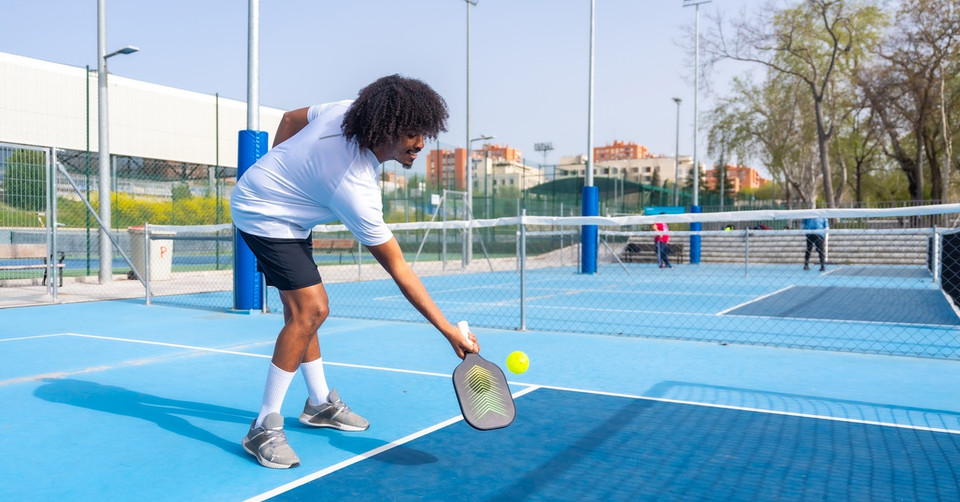Pickleball looks straightforward on the surface, but even experienced players struggle with one shot that constantly tests their patience: the dink. At first glance, the dink feels simple — just a short, controlled shot over the net. Yet in practice, it decides whether you run your opponent ragged or hand them the point.
Many court owners play with friends who already have solid skills, so the pressure to master this shot only increases. The good news? You can take control of the pace, force errors, and sharpen your game with the right strategies. In this guide, you’ll learn exactly how to hit the ultimate dink in pickleball, starting from grip and footwork and ending with smart drills that sharpen your touch.
Mastering the Foundation: Grip and Paddle Control
A strong dink begins with how you hold the paddle. Without the right grip, the rest of your technique falls apart. Most players use the continental grip, which keeps the paddle face stable no matter the angle you use to approach the ball.
This grip feels natural for both forehand and backhand dinks, meaning you won’t need to constantly adjust between sides. Stay stable by keeping your paddle face flat enough to lift the ball gently but firm enough to avoid a pop-up.
Once your grip feels comfortable, position your paddle correctly. Keep the paddle in front of your body at chest height, ready to move in either direction. This “ready position” helps you react faster and stay balanced.
When you contact the ball, push it slightly upward instead of swinging. A dink requires control, not speed. Keep your motion compact to reduce errors and stop the ball from sailing too far.
Many players get into trouble by overcompensating. They swing as if they hit a drive, adding spin and power where neither belongs. A dink shot feels like a soft push rather than a strike.
Practice this technique by placing a target near the net and aiming for it with minimal swing. Over time, your paddle face angle and hand steadiness will guide the ball naturally.
Perfecting Your Footwork and Balance

Footwork determines whether you reach the ball in time and whether your dink stays accurate under pressure. Many players overlook this aspect, assuming that movement doesn’t matter much in pickleball. In reality, steady and controlled footwork helps you hit clean dinks with good body position.
The first rule is to move with small, quick steps. Large steps throw off your balance and make it harder to keep your paddle steady. Think about “gliding” along the non-volley zone line.
As you shuffle side-to-side, keep your knees slightly bent and your weight evenly distributed. This low, athletic stance allows you to adjust quickly in either direction.
Balance matters most when you stop moving. If you still shift your weight as you make contact, your paddle angle wobbles.
To avoid this, set your feet before the shot, plant firmly, and then execute the dink with your paddle in control. This rhythm — move, stop, hit — helps you create shots you can repeat with accuracy.
Practice shadow dinks without a ball for greater balance. Stand at the non-volley zone line, shuffle left and right, and “swing” your paddle as if hitting.
Focus on pausing before each imaginary shot. This exercise teaches you to stabilize quickly and handle real speed and pressure from opponents.
Strong footwork and balance also prevent fatigue. Without them, you’ll find yourself chasing balls instead of calmly guiding them back. When you move efficiently, your energy lasts longer during games, giving you an edge in those long dink rallies that decide matches.
Targeting the Right Spots on the Court
A dink loses its effectiveness unless it lands exactly where you want it. Placing the ball randomly makes it easy for your opponent to step in and attack. By targeting specific areas, you force your opponent into awkward positions and dictate the pace of the rally.
Place your dink safely just over the net so it drops into the non-volley zone. A ball that lands here stays low and forces your opponent to hit upward, giving you control.
However, you shouldn’t rely only on middle dinks. Aim wide at times to pull your opponent off the court. When they stretch, they leave open space that you can exploit on the next shot.
Angles matter just as much as depth. A sharp cross-court dink travels farther over the net, giving you more margin for error while still pulling your opponent sideways. Down-the-line dinks work best when you have your opponent off balance or out of position.
Here are three placement strategies you can mix into your game:
- Middle dinks: Reduce angles and force your opponents to create their own momentum.
- Wide dinks: Stretch your opponents and create space for the next shot.
- Cross-court dinks: Add safety while forcing longer movement patterns.
Place the ball in different spots to keep rallies unpredictable. Opponents thrive on rhythm, but when you break that rhythm, they start making mistakes. Experienced players gain the upper hand with this strategy because they dink with purpose, not just to keep the rally alive.
To practice your placement, set up cones or markers in different parts of the non-volley zone. During drills, aim for each marker repeatedly until you can land the ball close with confidence. Training this way helps you hit more accurately while building muscle memory for real games.
Training Drills and Applying Them in Real Games

You build consistent dinking through practice, and the best drills teach you how to stay sharp under pressure. Start with simple partner work: stand at the non-volley zone line and trade dinks to keep the rally alive as long as possible.
Count your successful shots and challenge yourself to improve each session. For solo practice, use a wall or rebounder.
Stand a few feet away, focus on paddle angle, and groove your stroke until it feels natural. You can also add movement drills by having a partner send wider angles that force you to shuffle and reset.
Set clear goals during these drills, like hitting 50 successful cross-court dinks without an error. Goals add pressure and train you to stay disciplined when rallies heat up. Even ten minutes of focused practice each day sharpens your control and strengthens your confidence.
The real test comes in live games. Patience stops you from ending points too early, while adaptability helps you exploit your opponent’s weaknesses. Rely on your training, trust the strokes you’ve repeated, and remind yourself that dinking requires outlasting and outsmarting your opponents, not overpowering them.
When you put all the elements together — solid grip, quick footwork, smart placement, and practicing consistently — you’ll discover how to hit the ultimate dink in pickleball. The shot that once felt frustrating becomes your most reliable weapon.
When you control the pace and direction of rallies, your game transforms. Your private court becomes the perfect training ground, and your friends quickly notice the difference. Visit All Star Tennis Courts for the best pickleball supplies, along with tennis court equipment for those who enjoy playing both games.

